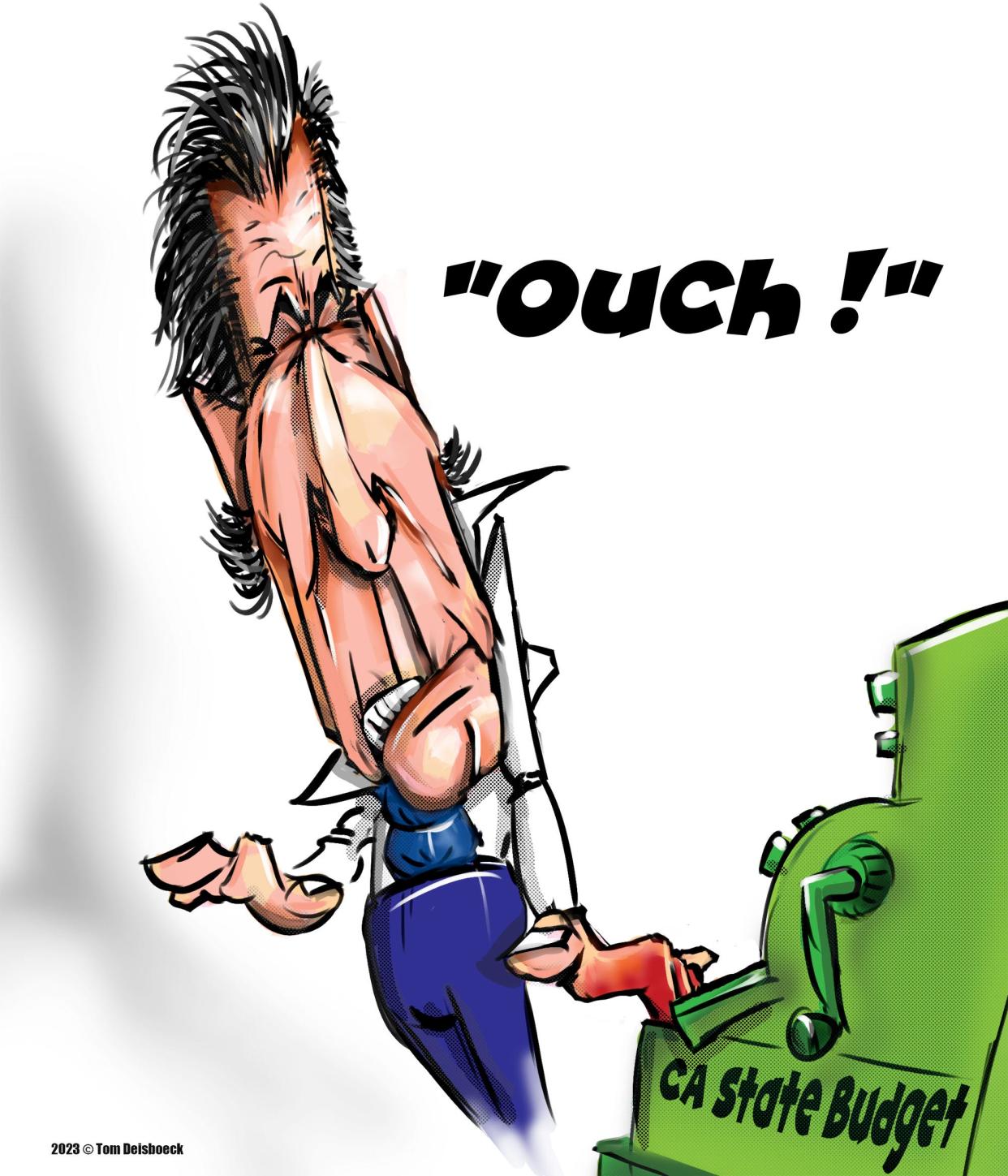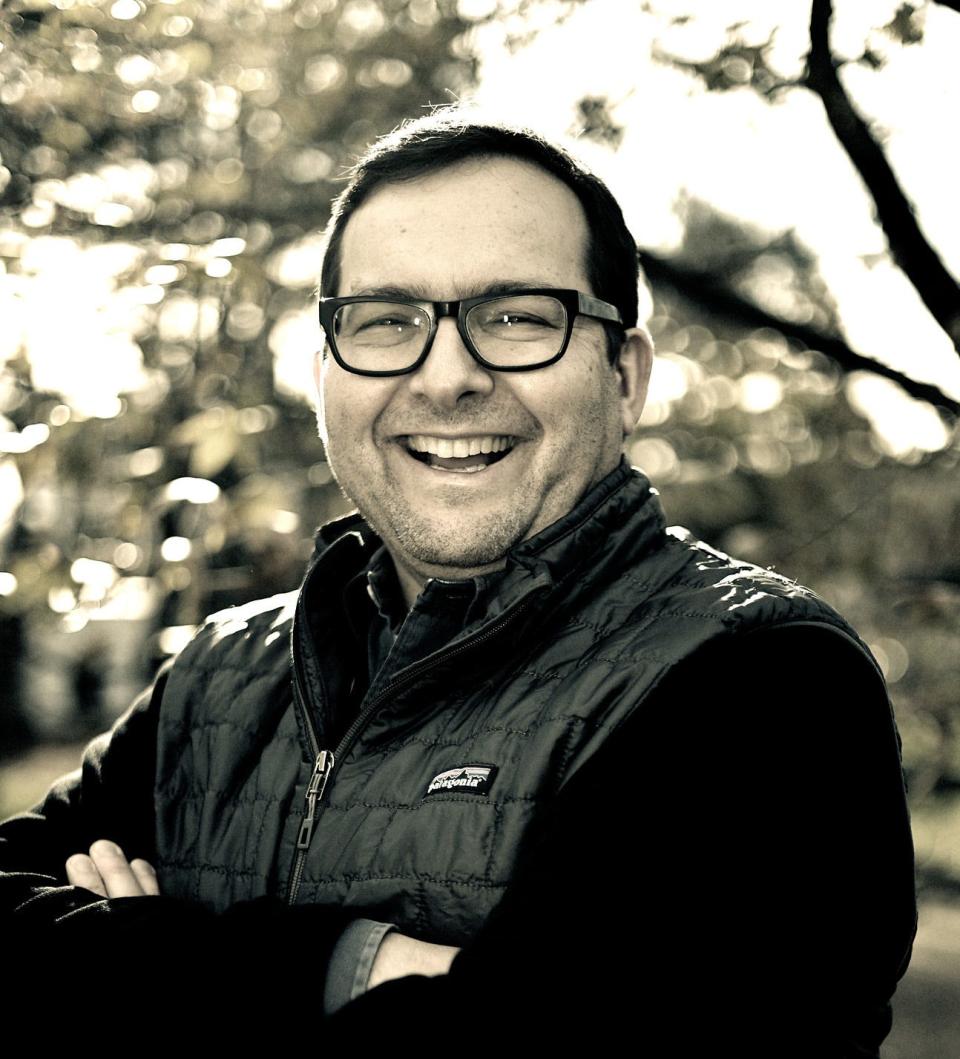Q&A with contributing Desert Sun political cartoonist Tom Deisboeck

Editor's note: The Desert Sun recently welcomed freelance cartoonist Tom Deisboeck to create original 'toons for the opinion pages. The following Q&A interview has been edited for length and clarity.
Q: I wanted to start off by saying welcome to The Desert Sun. Tell us a little bit about who you are and your interest in cartooning.
A: Thank you. It’s a pleasure to be here. Well, the story is that I actually went to medical school a long time ago. In a former life, it seems. I used to work full time as a medical scientist at an institution in Boston that I'm still affiliated with. I went to medical school in Germany — in Munich, and then came over to the States in ’97, stayed ever since.
We did a lot of early work on computational biology with applications of math and physics primarily to cancer, in projects for the NIH and the European Commission. I get easily bored when things start running on autopilot, so I then went to business school at MIT, graduated and became, in addition, a strategy consultant for innovative digital health care ventures.
I used to draw back in high school and then picked it up again about seven years ago and started to do cartooning on the political/editorial side just as much as on the humor side. I added children’s book illustrations (to my portfolio) and I’ve also collaborated on NFTs with others. I now also write and illustrate my own satirical essays on Medium, which is fun.
Depending on one’s perspective, I would have to admit it’s either an intriguing attempt to balance “left brain-right brain,” or just a very unfocused professional career. I wouldn’t want to have it any other way, though.
Speaking as someone who covers American and worldwide political issues − in terms of your repertoire, for lack of a better word, how would you describe the tone of your work?
So, I like to be edgy. The political side is on the biting, satirical end of things. Doesn’t always work, but I’m going for clever tag lines, hopefully — some form of a combination of the art and the caption. I don't like to restate the art in the caption or the other way around. I think the caption should add to it, not be redundant — let’s face it, if you need to “explain” the art, it’s probably not good enough. All this with the backdrop of the glaring political contexts that we're in.
Why do political cartoons matter? Why will they never go away?
It goes back to the best traditions, I'd say, of the medieval court jester, right? Can you comment with a pen on something that can be fairly serious? It is putting a mirror to everyday events and to the powerful with an art form that can be entertaining while still providing biting commentary at the same time. That can be something that's hard to head-on suppress. I mean, obviously, there are all sorts of attempts to do so — again back to the court jesters who, admittedly worst-case scenario, lost their heads if they didn’t walk the tightrope ever so gingerly.
I think certainly recent events in this country, but also all over the world, have emphasized the continued necessity to speak truth to power and thus reinvigorated the role of the cartoonist, regardless of your ability or even style to draw. … You can get a lot more across, I feel, with something that looks funny at first, but perhaps is much less so on a second look.
I want to keep going a little bit on the notion of the experience of interacting with a political cartoon now in the new digital space. How have you found as an artist that it's changed the topics that you’re engaging with or are you more interactive with your audience?
It's a very noisy “news” environment, particularly online, and to peek through that noise is really difficult.
If you have, say, 25,000 people that follow you, because you draw superheroes for Marvel or DC, it is a little different — people like to look at the spectacular art of their beloved characters. Nothing wrong with it. However, from what I see, even the best editorial cartoonists measure Twitter engagements often only in the low hundreds.
In addition, if you take on a particular Supreme Court decision or legislative action, or some form of political executive situation, you instantly engage — in this country which now seems to be 50/50 divided — 50% of the people who agree and 50% of the people who disagree with it, but they need to see it first, right? … So, yes, it’s now much easier to go from pen to digital — true, uploading is much faster, dissemination more rapid, and technically you can reach anyone around the world in seconds as long as a person has internet access.
But in reality, while the reaction time to political events has dramatically shortened, getting through the noise has gotten harder and harder.
Do you find that you're constantly trying to keep up with the 24/7 news cycle? Or how do you approach just the endless news that we're all sort of bombarded with?
It's an open secret that all of us — and it doesn't really depend on which side you stand politically — develop sooner or later a love-hate relationship with our “subjects.” You have to strip it down to the minimum and then accentuate the features, say, Biden’s dark sunglasses or Trump’s hair — but over and over, really? Let’s just say that during the four years of the Trump administration, we've all drawn a lot of Trump, in one way or another.
It reminds me of when I grew up in Germany in the ’80s, every cartoonist loved to draw Reagan, because he was so expressive, right? The nose, chin, the hair, the background story of him being an actor, a bit of a cowboy and under Nancy’s spell, all that lended itself to very expressive representations. And the same thing goes for Trump — less so to some degree for Biden, other than the glasses and some ageism, I guess. Perhaps it takes four years to draw these guys well, and then we’re all happy to try something new.
There's a rush sometimes. Every cartoonist jumps on the next high-level gaffe of a politician. And if you're not doing it right away, three days later, you're run over by the news cycle, so speed is a bit at the essence which influences your approach and technique. Also, if you wait, by then the obvious artistic treatments of the story have all been done and published. So, you want to go somewhat more subtle, which may get risky if you're trying to be too clever as people may not get it or may not like it, or at that point may just be fed up with it.
What are you currently what are you working on this week?
Right now, I'm in some discussion with a magazine at my university, Harvard School of Public Health, to think about public health content that could be potentially communicated visually, anywhere from engaging storytelling to maybe edgy cartooning. I have already done some cartooning work for Harvard Health Publishing on COVID messaging last year. The question remains, is there a way to bring cartooning into health care communication to entertain, get through the noise and educate? Next, I am working on drafting the illustrations for the fourth installment of a children’s book series on recycling – and, needless to say, I’m hopelessly behind schedule.
On behalf of The Desert Sun opinion pages, we're so thrilled to have you drawing for us and I know that our readers are very keen to follow our cartoons daily.
That’s great to hear.
Tom Deisboeck is an accomplished editorial cartoonist, published children’s book illustrator and NFT artist (https://www.tom-deisboeck-art.com/). Tom lives with his family just outside of Boston. He loves to travel, draw, write and walk his loyal Labrador retriever, Jack.

This article originally appeared on Palm Springs Desert Sun: Q&A with contributing Desert Sun political cartoonist Tom Deisboeck

